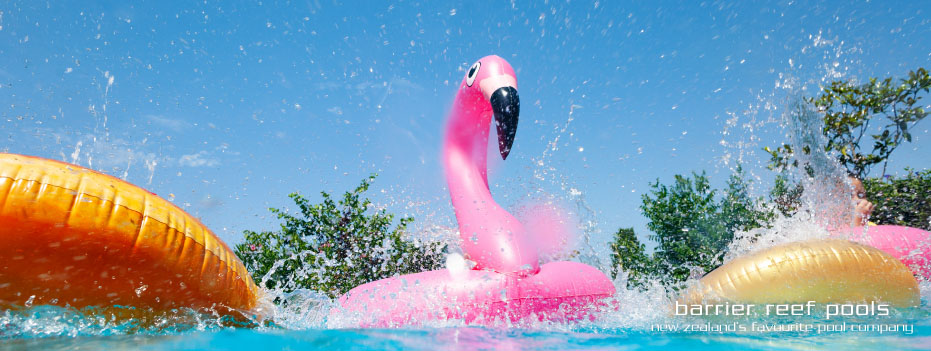How A Retaining Wall Can Be A Protective Barrier For Your Pool
Are you wondering if your fibreglass pool needs a retaining wall? A big challenge that pool installers face when they come to install pools in people's homes is the inaccurate grade of their yard. It's rare to walk into a backyard and find that the ground is level.

When the ground isn’t level, the pool installer may have to add gravel or other kinds of backfilling in order to get by without needing to add expensive walls. But if you do get a retaining wall, that is, the kind of wall that surrounds your pool, your backyard will look more aesthetic. A retaining wall can really add to the beauty of your backyard.
When Do You Need a Retaining Wall for Your Pool?
Before you add a retaining wall to your backyard, you’ll need to determine whether you really need one first. There are pool owners who don’t even know what retaining walls are, much less if they need them. This can, however, spell a disaster for a homeowner should they want to add a retaining wall later. There will be no space to divert water that needs to be diverted.
As a result, rainwater could come down the slope of the retaining wall when it rains. All the dirt and debris present in the rainwater will also be carried down into your fibreglass pool.
If your backyard has a slope that rainwater can use to get down to a spot that is level, where you’re most likely to install your pool, you can get a French drain. This drain will catch the rainwater before it reaches your patio. But should you find yourself cutting into the grade of your backyard in order to install your pool, then this solution may not work for you.

What You Should Know About Retaining Walls for Swimming Pools?
If you want to add a retaining wall around your fibreglass pool, then consider integrating it into your home’s general aesthetic. You can have a patio built that’s elevated, which always looks appealing. You could either surround your patio with the retaining wall, or the fibreglass pool itself. You can even add cascades into it as well.
Consider ensuring that your wall can be between 20 and 24 inches. This allows you to use the wall as a sitting wall. Note that all retaining walls aren’t designed to keep the water from entering your pool deck. There are times when retaining walls are constructed in order to keep the pool in the proper place. In such cases, if you make use of the right backfill as wellness compaction, you may not need to add a retaining wall at all.
Should gravel be required at the time you’re having the retaining wall installed, then the cost of that gravel may be more expensive than the cost of building the wall. There should be space in your backyard that lends itself to grading, where the area isn’t too steep. In order to determine what the slope is, this depends on the amount of dirt that is left behind from excavating the pool. Some homeowners may need extra dirt in order for the slope to be feathered out.
Check out why you should take care of fibreglass pool stains quickly!
Why Does Your Pool Need a Retaining Wall?
People whose backyards are graded and levelled will not usually need to add a retaining wall around their pool. However, even if you don’t need it, you could still choose to have one built. You don’t always need to add a retaining wall in order to endure your pool can pass the building codes of your area.
Should your yard be on a slope, on the other hand, a retaining wall may be necessary. A retaining wall for a pool can prevent dirt, debris, soil, and other contaminants from running down a slope and into your fibreglass pool or the patio. Should your backyard have a high slope, then it’s at risk of faster erosion with time. A retaining wall can act as a durable and protective barrier that keeps soil as well as rocks from entering your patio or the pool. This helps prevent serious damage.
In homes where the soil is loose or sandy, a retaining wall will be needed to ensure the pool stays in place. In places where the humidity levels are high and there’s also a lot of rainfall, the soil could become vulnerable to erosion.
Before you decide whether you should get a retaining wall or not, first talk to your pool installer. They’ll be able to inspect your backyard’s grading in order to determine whether the soil is stable or not. After they’ve done a thorough inspection, they can let you know whether you need a retaining wall or not.

Designing and Building a Retaining Wall
When you know that your fibreglass pool needs a retaining wall, it’s time to think about its design and construction. Contractors don’t always build retaining was exactly the same. But most will use a concrete slab or a footer in order to start the project.
After the concrete has been poured, steel rebar will be run through its length, in order to add reinforcement. Bricks and even cinder blocks can be stacked, in order to form the wall. Then, they’ll be filled with mortar as well as rebar which will tie them back to the footer.
Paver boards can be added to the top of the retaining wall. It will need to be secured with mortar. You can even add unique features to your pool wall, which make the area look interesting and also add to the property value of your home.
Conclusion
A retaining wall can be essential for some pools, but not essential for others. Even if your fibreglass pool doesn’t need a retaining wall, you can still choose to add one for aesthetic reasons. Use this guide to learn what a retaining wall is, and determine whether you should get one or not. Retaining walls can help you protect your pool while also increasing the property value of your home.




